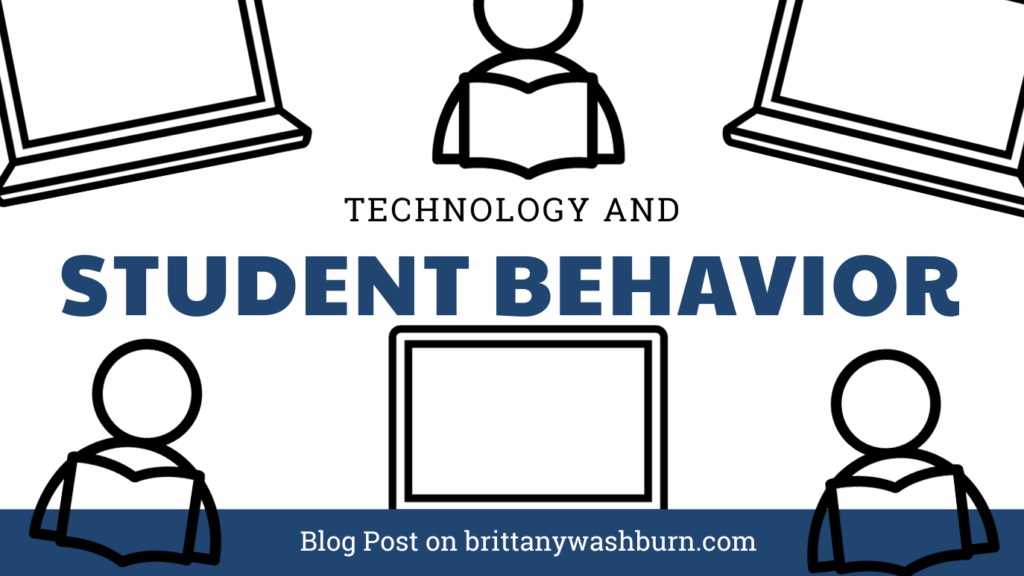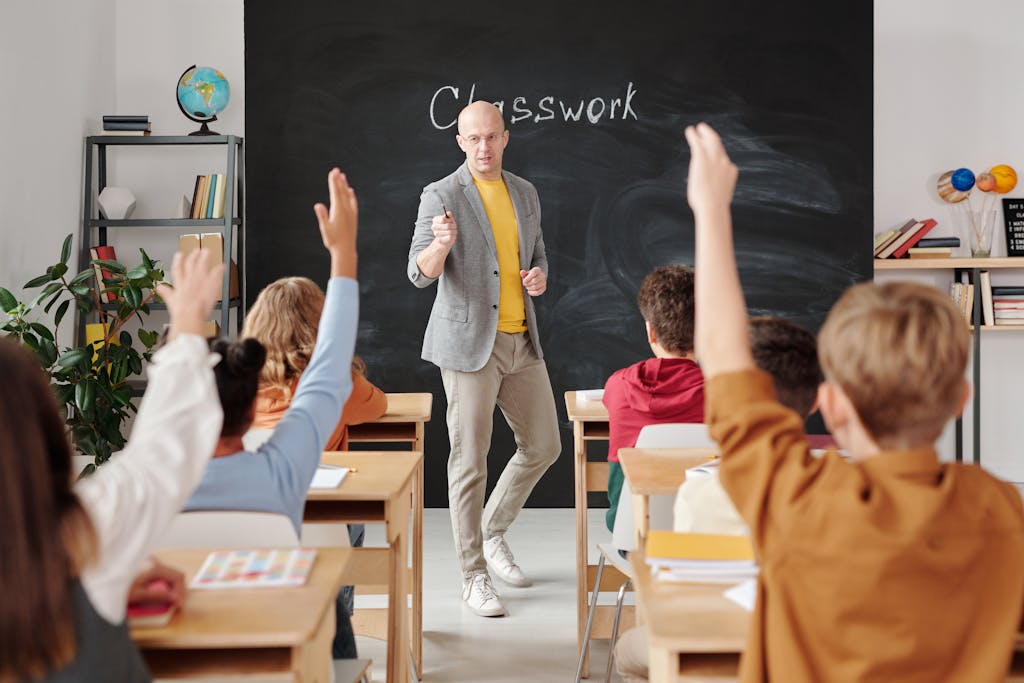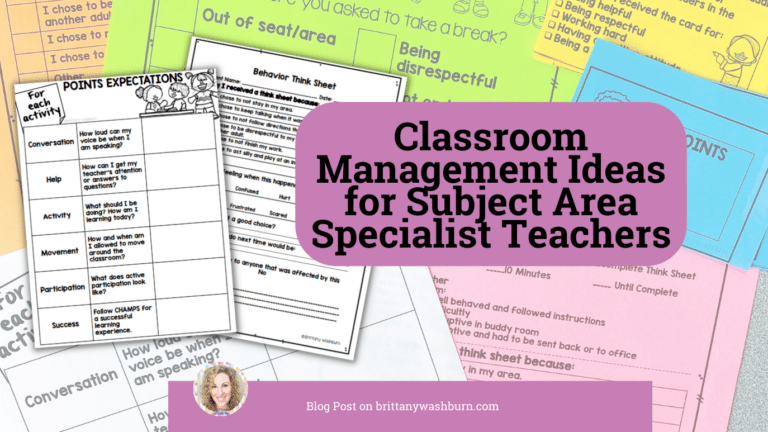Technology and Student Behavior

As an elementary technology teacher, it’s important to understand the role of technology in shaping student behavior in the classroom. With so many digital devices and platforms available, it’s easy for students to get distracted and lose focus. That’s why student behavior management is crucial to create a positive learning environment that encourages productivity and creativity. In this article, we’ll explore practical strategies for promoting positive classroom behavior, tips for dealing with disruptive student behavior, and ways to evaluate technology’s impact on classroom behavior management. By the end of this guide, you’ll also have the tools and knowledge to handle any behavior challenges that come your way in your elementary technology classroom.
Frequently Asked Questions
What is student behavior management?
Student behavior management is the process of creating a positive learning environment. You accomplish this by establishing clear expectations and rules, encouraging positive behaviors, and addressing disruptive behaviors effectively. It’s an important aspect of teaching, particularly in technology classrooms where students may be more easily distracted by digital devices.
How can I use technology to promote positive behavior in my classroom?
There are many ways to use technology to encourage positive behavior in the classroom. For example, you could use gamification techniques to make learning more engaging. You can also use digital platforms to make it easier for students to collaborate and communicate. You could also use educational apps that reward positive behaviors or teach self-regulation skills.
What should I do if a student is being disruptive in the classroom?
First, it’s important to avoid reacting emotionally. Try to address the behavior calmly and respectfully. If possible, avoid singling out the student in front of the class. If the behavior continues, you may need to involve the student’s parents or use disciplinary measures such as detention or suspension from using devices.
How can I evaluate the effectiveness of my behavior management strategies?
There are a few ways to evaluate the effectiveness of your behavior management strategies. You could use self-reflection and ask yourself whether your strategies are working and what you could improve. You could also gather feedback from students, parents, and colleagues to get a different perspective. Finally, use data such as test scores, attendance rates, and disciplinary incidents to measure the impact of your strategies over time.
Introduction to Student Behavior Management in Technology Classes
As a technology teacher, managing student behavior is undeniably an essential part of your job. Effective behavior management is crucial to creating a positive and engaging learning environment. This will foster academic success and encourage students to explore and use technology in meaningful ways. In this guide, we’ll take a closer look at the role of behavior management in elementary technology classes, the impact of technology on classroom behavior, and practical strategies for promoting positive behavior and addressing disruptive behavior.
The Importance of Behavior Management in Elementary Technology Classes
Behavior management is critical in elementary technology classes. It lays the foundation for successful technology integration and supports academic achievement. When students are well-behaved and engaged in their learning, they can focus on acquiring and applying technology skills, collaborating with peers, and using technology tools to create and innovate. On the other hand, poor behavior can disrupt learning, decrease student motivation, and create a negative classroom environment that can be challenging to overcome.
The Role of Technology in Classroom Behavior
Technology can both positively and negatively impact classroom behavior. On the positive side, technology can enhance engagement, motivation, and collaboration. Digital tools and platforms allow students to interact with content in unique and meaningful ways, and provide opportunities for differentiation and personalization. However, technology can also be a source of distraction, cyberbullying, and other negative behaviors. It is important to understand how technology can influence student behavior, and to develop strategies to address these challenges proactively.

Understanding the Role of Technology in Classroom Behavior
The Benefits and Challenges of Technology Integration in the Classroom
Technology integration in the classroom can offer many benefits. These include increased engagement, enhanced collaboration, and more efficient use of time. However, integrating technology also presents challenges, such as unequal access to devices and platforms, cyberbullying, and potential distractions.
How Digital Devices and Platforms Affect Student Behavior
Digital devices and platforms, such as smartphones and social media, can have a significant impact on student behavior. Students may become addicted to their devices, engage in cyberbullying or inappropriate online behavior, or use technology to distract themselves during class. It’s essential to understand how digital devices and platforms can affect student behavior. Then you can create strategies to mitigate negative behaviors and promote positive ones.
Strategies for Promoting Positive Classroom Behavior
Establishing Clear Classroom Rules and Expectations
Establishing clear classroom rules and expectations is the foundation of effective behavior management. It’s essential to communicate expectations regarding technology use, respect for peers and the teacher, and class participation. Taking the time to establish these rules and expectations at the beginning of the school year will help to prevent negative behavior and promote positive behavior throughout the year.
Using Positive Reinforcement to Increase Desired Behaviors
Positive reinforcement is an effective way to increase desired behaviors in the classroom. Celebrating student achievements, praising positive behavior, and rewarding good behavior with privileges, such as extra technology time, can help to reinforce positive behavior and make desirable behavior more likely in the future.
Teaching Students Self-Regulation Skills
Teaching self-regulation skills is one of the most effective ways to promote positive behavior in elementary technology classes. Self-regulation skills, such as self-awareness, self-control, and stress management, can help students recognize negative behaviors and make positive choices. By teaching students these skills and providing opportunities for them to practice them, students will become more self-directed and less likely to engage in negative behavior.
Tips for Dealing with Disruptive Student Behavior
Handling Disruptive Behaviors Respectfully and Effectively
Despite your best efforts, disruptive behavior may occur in your technology class. It’s essential to handle disruptive behavior respectfully and effectively to maintain a positive learning environment. Strategies such as redirecting students, using positive consequences, and communicating with parents can help to address disruptive behavior and prevent it from becoming a pattern.
Dealing with Cyberbullying and Online Misconduct
Cyberbullying and online misconduct can occur in technology classrooms, just as they can outside of it. It’s essential to have a plan in place for dealing with these issues, including reporting and documenting incidents, communicating with parents and administrators, and helping students understand the impact of their behavior on others. Take steps to address cyberbullying and online misconduct proactively, so you can help to create a safe and supportive learning environment for all students.
Creating a Positive Learning Environment through Classroom Management
As an elementary technology teacher, creating a positive learning environment through effective classroom management is crucial to student success. Subsequently, setting up the classroom space for optimal learning and behavior and maintaining order and discipline in the classroom, you can minimize distractions and disruptions and create a safe and productive learning environment for your students.
Setting Up the Classroom Space for Optimal Learning and Behavior
To create a positive learning environment, it’s essential to set up the classroom space in a way that promotes learning and positive behavior. This may include organizing equipment and materials, arranging furniture, and setting clear expectations for student behavior.
Consider using visual aids such as posters or signs to help students understand and remember the rules and expectations. You can also use designated areas in the classroom for specific activities to help minimize distractions and keep students focused.
Maintaining Order and Discipline in the Classroom
Maintaining order and discipline in the classroom is essential to creating a positive learning environment. This may include establishing routines, offering praise and rewards for positive behavior, and using consequences for negative behavior.
It’s undoubtedly important to be consistent with your approach to behavior management and to communicate clearly and respectfully with students about expectations and consequences. By maintaining a positive and predictable classroom environment, you can help your students feel secure and focused on learning.
Building Strong Relationships with Students to Reduce Behavioral Issues
One of the most effective strategies for reducing behavioral issues is to build strong relationships with your students. By connecting with your students on a personal level and establishing positive teacher-student relationships, you can help students feel valued and motivated to behave positively.
Ways to Connect with Students on a Personal Level
Connecting with students on a personal level can be as simple as taking an interest in their hobbies or asking them about their day. You can also use positive reinforcement and praise to help build self-esteem and increase motivation.
Consider taking the time to learn about your students’ interests and backgrounds, and incorporate their interests into your lessons where possible. By showing your students that you care about them as individuals, you can help create a positive and supportive learning environment.
The Importance of Positive Teacher-Student Relationships in Behavior Management
Positive teacher-student relationships are crucial to effective behavior management. When students feel valued and respected by their teachers, they are more likely to behave positively and to follow classroom expectations.
By building positive relationships with your students, you can increase their motivation to behave positively and make it easier to manage any behavioral issues that may arise.
Practical Approaches to Technology Integration and Behavior Management
As a technology teacher, you have the unique opportunity to integrate technology into your behavior management strategies. By using technology to enhance behavior management strategies and promote positive behaviors, you can create a more engaging and effective learning environment for your students.
Using Technology to Enhance Behavior Management Strategies
Consider using technology tools such as behavior tracking apps or digital rewards systems to reinforce positive behaviors and track student progress. You can also use digital tools to create individualized behavior plans or to provide additional support for students who may need it.
Using technology to enhance behavior management strategies can help increase student engagement and motivation while also making it easier to track and manage student behavior. Check out these 10 Classroom Management Apps for Tech-Savvy Teachers and Tech Tools to Simplify Classroom Management for ideas on which tools to try out with your class.
Effective Use of Digital Platforms and Apps to Encourage Positive Behaviors
Digital platforms and apps can be used to encourage positive behaviors in a variety of ways. For example, gamification techniques can be used to make learning and behavior management more engaging and interactive.
Other strategies may include using social media platforms to share positive stories or achievements and to promote a sense of community in the classroom. By using technology in creative and effective ways, you can help promote positive behaviors and enhance the learning experience for your students.
Evaluating Technology in the Classroom as a Means for Promoting Positive Behavior
As with any strategy for behavior management, it’s important to evaluate the effectiveness of technology tools and platforms for promoting positive behaviors. Measure the impact of technology on classroom behavior management and assess the effectiveness of different technology tools. In doing so, you can refine your approach and continue to improve the learning environment for your students.
Measuring the Impact of Technology on Classroom Behavior Management
Consider using data and feedback from students and other educators to evaluate the impact of technology on classroom behavior management. This may include tracking student progress and engagement or conducting surveys or focus groups to gather feedback.
With this in mind, you can measure the impact of technology on classroom behavior management, you can identify areas for improvement and refine your approach to best meet the needs of your students.
Assessing the Effectiveness of Different Technology Tools in Promoting Positive Behaviors
As with any tool or strategy, it’s important to assess the effectiveness of different technology tools in promoting positive behaviors. Consider using trial periods or pilot programs to test different tools and gather feedback from students and other educators.
By assessing the effectiveness of different technology tools, you can identify the best approaches for promoting positive behaviors and creating a positive learning environment for your students. In conclusion, technology can be a powerful tool for enhancing learning and engagement in the classroom. However, it’s crucial to manage student behavior effectively to create a positive and productive learning environment. By implementing the strategies and tips outlined in this guide, you’ll be equipped to handle any behavior challenges that come your way in your elementary technology classroom. Finally, Remember that behavior management is an ongoing process. Stay flexible and open to new approaches as you work towards creating a successful and fulfilling learning experience for your students.
Top 8 Apps and Programs for Streamlining Classroom Management and Assessment
The integration of technology has become the underpinning which supports teachers as they manage their…
5 Ways to Incorporate Technology into Daily Classroom Routines
Chromebook Care Tips for Teachers
Elgin, IL – 04/02/2020: A chromebook being used at home for a remote classroom during…
PBIS-Friendly Consequences
PBIS stands for Positive Behavior Interventions and Supports. It is an approach that is usually…
Tips for Helping Students with Disabilities Get the Most Out of Your Gen Ed Tech Class
Students have such a wide range of abilities that it can be very challenging to…
Flexible seating guide for computer lab teachers
Incorporating flexible seating in computer labs has been gaining popularity among educators who seek to…

















